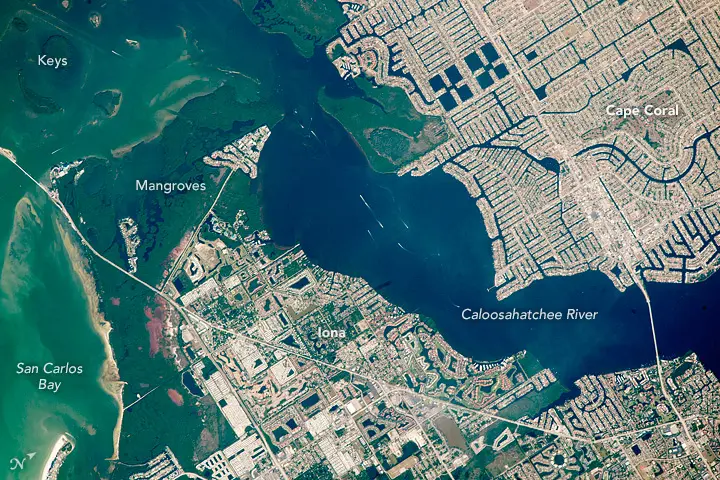
Discover what are nature-based solutions and how they’re changing our world! Dive into this friendly guide to explore their impact and benefits.
Nature-Based Solutions Key Takeaways:
- Nature-based solutions are strategies that use natural processes and ecosystems to address environmental challenges.
- They include practices like forest restoration, urban greening, and sustainable agriculture, aiming to improve biodiversity, mitigate climate change, and enhance human well-being.
Ever wondered what are nature-based solutions and why they’re a buzzword in environmental circles?
You’re in the right place! Join us on a fascinating journey to uncover how these solutions are revolutionizing our approach to sustainability and nature conservation.
Nature-Based Solutions In a Nutshell
Nature-Based Solutions: A Definition and Their Significance
- Nature-based solutions (NBS) are actions that work with and enhance nature to help address societal challenges, offering a harmonious approach to environmental, social, and economic issues.
- They are significant because they provide a sustainable way to mitigate and adapt to climate change, while also benefiting biodiversity and human well-being.
Impact on Environmental Sustainability
- The impact of nature-based solutions on environmental sustainability is profound.
- They help in carbon sequestration, improve air and water quality, and enhance biodiversity.
- By restoring ecosystems, NBS can reduce the impacts of climate change and prevent natural disasters like floods and droughts, making them essential for sustainable development.
Global Examples of Success
- Globally, there are numerous examples of successful nature-based solutions. From urban green spaces in Singapore enhancing city life, to the restoration of mangroves in Vietnam protecting coastal communities, these solutions demonstrate how working with nature can lead to significant environmental, economic, and social benefits.
Understanding Nature-Based Solutions
The Essence of Nature-Based Solutions
Nature-based solutions (NBS) represent a pivotal approach in our interaction with the natural environment.
These solutions are grounded in the utilization of natural processes and ecosystems to address various environmental, social, and economic challenges.
In essence, NBS involves practices like restoring forests, preserving wetlands, and creating green urban spaces, all of which harness the inherent capabilities of nature.
Importance in the Current Environmental Context
The importance of nature-based solutions in our current environmental context cannot be overstated.
As we face escalating challenges such as climate change, biodiversity loss, and pollution, NBS offer a path that aligns human development with ecological well-being.
They provide a way to not only mitigate the adverse effects of these issues but also to create a more resilient and sustainable future.
Integrating Nature into Policy and Practice
By integrating nature into policy and practice, NBS can help societies adapt to changing environmental conditions while also contributing to the health and well-being of communities.
This approach is not just about conservation; it’s a comprehensive strategy that interweaves the health of our planet with the prosperity of its inhabitants.
The Way Forward
As we delve deeper into the 21st century, embracing and implementing nature-based solutions will be paramount in shaping a harmonious coexistence between humanity and the natural world.
The Concept and Principles of Nature-Based Solutions
Defining Nature-Based Solutions
Nature-based solutions (NBS) refer to strategies that involve using natural processes and ecosystems to address societal challenges.
This concept has a broad scope, encompassing everything from large-scale ecosystem restoration projects to small-scale urban green initiatives.
Nature-based solutions (NBS) is the sustainable management and use of natural features and processes to tackle socio-environmental issues. These issues include climate change (mitigation and adaptation), water security, water pollution, food security, human health, biodiversity loss, and disaster risk management. The European Commission’s definition of NBS states that these solutions are “inspired and supported by nature, which are cost-effective, simultaneously provide environmental, social and economic benefits and help build resilience. Wikipedia
NBS are designed to provide benefits in three key areas: environmental, social, and economic.
The Environmental Aspect

Environmentally, NBS aims to protect, sustainably manage, and restore natural or modified ecosystems.
This could mean reforesting areas, restoring wetlands, or integrating green spaces into urban settings.
These actions help in mitigating climate change, preserving biodiversity, and enhancing ecosystem services.
The Social Dimension
Socially, NBS contributes to improved human well-being and health.
Green spaces in cities, for example, can improve air quality and provide recreational areas, positively impacting mental and physical health.
In rural areas, ecosystem services like clean water and fertile soil directly support livelihoods.
Economic Benefits
Economically, investing in NBS often results in cost savings compared to traditional infrastructure projects.
Ecosystem services provided by natural solutions tend to be more sustainable and require lower maintenance costs in the long run.
Key Principles of Nature-Based Solutions
- Sustainability: NBS should contribute to long-term environmental health and sustainability.
- Biodiversity: They must support and enhance biodiversity, not just focus on single-species conservation.
- Adaptability: Solutions should be adaptable to changing environmental conditions.
- Multi-functionality: NBS should aim to provide multiple benefits across different sectors.
- Community Involvement: Engaging local communities in the planning and implementation of NBS is crucial for their success and sustainability.
- Evidence-Based: Decisions should be based on scientific evidence and traditional knowledge.
- Scale and Context Specificity: Solutions must be tailored to the specific ecological, social, and economic contexts of each area.
In a Nutshell:
Understanding the concept and principles of nature-based solutions is critical for their effective implementation.
These solutions offer a holistic approach to tackling environmental challenges, providing multiple benefits across different domains.
As we move forward, the principles of sustainability, biodiversity, adaptability, multi-functionality, community involvement, evidence-based decision-making, and context specificity will be key to harnessing the full potential of nature-based solutions.
Examples of Nature-Based Solutions in Action
Urban Greening: Singapore’s Garden City
Singapore, known as a Garden City, exemplifies urban greening. The city-state has integrated nature into its urban fabric, with initiatives like the Gardens by the Bay and green roofs on buildings.
These efforts have not only enhanced the city’s aesthetics but also improved air quality and reduced urban heat island effects.
Singapore’s model demonstrates how urban greening can create livable and sustainable cities.
Coastal Protection: Mangrove Restoration in Vietnam
Vietnam has seen remarkable success in coastal protection through mangrove restoration.
The replanted mangroves act as natural barriers against storms and erosion, protecting coastal communities.
This initiative has also revived local fisheries and biodiversity.
The project underscores the importance of ecosystem restoration in disaster risk reduction and livelihood enhancement.
Mangroves in Cape Coral, Florida

Water Management: New York City’s Natural Approach
New York City adopted a nature-based solution for water management by investing in the protection of its upstate watershed.
This approach proved more cost-effective than building a new water treatment plant.
By maintaining the natural purification process of the watershed, the city ensures clean drinking water for millions, showcasing the economic feasibility of NBS.
Lessons Learned from Global Examples
- Adaptability and Local Context: Each of these examples highlights the importance of tailoring solutions to local environments and needs.
- Community Involvement: Successful projects often involve local communities, ensuring long-term sustainability and acceptance.
- Integrated Approaches: Combining NBS with traditional infrastructure can yield optimal results.
- Long-Term Vision: These solutions require a long-term commitment but offer substantial and sustainable benefits.
In a Nutshell:
These global case studies of nature-based solutions demonstrate their versatility and effectiveness in addressing environmental challenges.
From urban greening in Singapore to coastal protection in Vietnam, and innovative water management in New York, these examples provide valuable insights and lessons for future NBS projects.
Emphasizing adaptability, community involvement, integrated approaches, and a long-term vision, they offer blueprints for sustainable development through harmony with nature.
Benefits of Nature-Based Solutions

Environmental Benefits: A Greener Planet
Nature-based solutions offer a plethora of environmental benefits.
Primarily, they contribute significantly to climate change mitigation through carbon sequestration.
Trees, wetlands, and other natural habitats absorb and store carbon dioxide, one of the principal greenhouse gases.
Additionally, NBS enhances biodiversity by creating and preserving habitats, crucial for countless species’ survival.
They also play a vital role in water management, improving water quality and reducing the risk of floods and droughts through natural processes.
Social Advantages: Healthier, Happier Communities
The social benefits of nature-based solutions are equally compelling.
Access to natural spaces, such as parks and green urban areas, has been linked to improved mental health, reduced stress, and enhanced overall well-being.
These solutions also bolster community resilience, especially in vulnerable areas prone to environmental hazards.
By providing natural buffers, NBS helps protect communities from extreme weather events.
Furthermore, they offer recreational and educational opportunities, fostering a deeper connection between people and their natural surroundings.
Economic Advantages: Cost-Effective and Sustainable
Economically, nature-based solutions are often more cost-effective than traditional infrastructure projects.
They generally require less maintenance and have longer lifespans. For instance, natural flood defenses like wetlands can be more sustainable and cheaper than building flood walls.
NBS also boosts local economies by creating green jobs in sectors like conservation, landscaping, and ecotourism.
Moreover, by contributing to a healthier environment, they can reduce healthcare costs associated with pollution and urban heat islands.
8 Benefits of NBS
- Climate Change Mitigation: NbS, such as forests and wetlands, capture and store carbon dioxide, helping to reduce greenhouse gas concentrations in the atmosphere.
- Biodiversity Enhancement: By creating and restoring natural habitats, NbS support a wide range of plant and animal species, enhancing biodiversity.
- Improved Water Quality: Natural systems like wetlands and riparian buffers filter pollutants, leading to cleaner rivers, lakes, and groundwater.
- Flood Control: NbS, including floodplain restoration and green infrastructure, can absorb excess rainwater, reducing flood risks.
- Enhanced Community Resilience: NbS strengthen community resilience against environmental hazards like floods, droughts, and heatwaves.
- Economic Savings: Many NbS are cost-effective alternatives to traditional infrastructure, offering sustainable solutions with lower long-term maintenance costs.
- Recreational and Aesthetic Value: Green spaces in urban areas provide recreational opportunities and enhance the aesthetic appeal of cities.
- Health Benefits: Access to natural areas through NbS can improve physical and mental health by reducing stress and encouraging physical activity.
In a Nutshell:
The benefits of nature-based solutions extend across environmental, social, and economic domains, making them an integral part of sustainable development.
They offer a holistic approach to addressing some of the most pressing challenges of our time, from climate change to urbanization.
By investing in NBS, we not only protect and enhance our natural environment but also create healthier, more resilient communities and economies.
Challenges and Limitations
Overcoming Common Obstacles
Implementing nature-based solutions often encounters various challenges.
One significant barrier is the need for substantial initial investment, especially for large-scale projects.
Additionally, there’s a lack of awareness and understanding of NBS among policymakers and the general public, which can hinder their adoption and support.
Another challenge is the complexity of integrating NBS into existing urban and rural landscapes, requiring careful planning and collaboration across multiple sectors.
Limitations to Consider
While NBS offers numerous benefits, they also have limitations.
For instance, relying solely on nature-based solutions may not be sufficient in areas with extreme environmental conditions or heavily urbanized regions where natural spaces are limited.
Moreover, the effectiveness of NBS can be influenced by climate change itself, as changing weather patterns may alter the functioning of natural ecosystems.
Furthermore, there can be conflicts between ecological objectives and human land use, requiring delicate balance and negotiation.
Addressing Criticisms
Some critics argue that NBS can lead to a shift of responsibility, where governments or corporations may use these solutions to avoid reducing greenhouse gas emissions directly.
Ensuring that NBS complements, rather than replaces, emissions reduction efforts is crucial.
Another criticism is the potential for NBS to be used in a way that displaces local communities or harms indigenous rights.
It’s essential to ensure that NBS projects are developed ethically and inclusively, with the participation and consent of local communities.
In a Nutshell:
The challenges and limitations of nature-based solutions highlight the need for a balanced and integrated approach, combining NBS with other strategies for maximum effectiveness.
Addressing these challenges requires increased funding, awareness, collaborative planning, and ethical considerations to ensure that NBS are a positive force for environmental, social, and economic sustainability.
The Future of Nature-Based Solutions
Emerging Trends in Nature-Based Solutions
The future of nature-based solutions (NBS) is marked by several emerging trends.
One key trend is the increasing integration of technology with NBS.
Advanced data analytics, remote sensing, and GIS technologies are being used to monitor and enhance the effectiveness of nature-based projects.
Another trend is the growing emphasis on urban NBS, such as green roofs, urban forests, and vertical gardens, which are becoming essential elements in modern city planning.
Additionally, there’s a rising focus on community-led NBS, recognizing the importance of local knowledge and engagement in the success of these initiatives.
Scalability and Broader Implementation
Scalability is a critical aspect of the future of NBS. While many successful projects are small-scale and localized, the challenge lies in scaling these solutions to have a broader impact.
This requires not only more substantial investment and policy support but also the development of models that can be adapted and applied in different geographic and social contexts.
Successful scalability will depend on building partnerships across public, private, and non-profit sectors.
Global Impact and Potential
The potential for the global impact of NBS is vast.
They offer a pathway to meet multiple United Nations Sustainable Development Goals (SDGs), including those related to climate action, biodiversity, clean water, and sustainable cities.
NBS can play a pivotal role in global climate mitigation and adaptation strategies.
By 2030, it’s anticipated that nature-based solutions could provide over a third of the climate mitigation needed to keep global warming below 2°C.
Additionally, as the world grapples with rapid urbanization and environmental degradation, NBS can be instrumental in creating more sustainable and resilient societies.
In a Nutshell:
The future of nature-based solutions is promising, with emerging trends pointing towards greater technological integration, urban application, and community involvement.
The scalability and potential global impact of NBS are significant, offering a hopeful outlook for addressing some of the most pressing environmental challenges of our time.
FAQs on Nature-Based Solutions

Nature-based solutions (NBS) are increasingly recognized as vital tools for addressing environmental challenges.
They offer innovative approaches to issues like climate change, biodiversity loss, and urban sustainability.
However, there are often questions about what exactly constitutes a nature-based solution, how these strategies contribute to biodiversity and their economic viability.
Below are answers to some frequently asked questions to clarify these aspects of NBS.
Q: What are some common nature-based solutions?
A: Common nature-based solutions include:
- Urban Greening: Creating parks, green roofs, and urban forests.
- Restoration of Ecosystems: Replanting forests, restoring wetlands, and rehabilitating degraded lands.
- Sustainable Agriculture Practices: Using techniques that mimic natural processes, such as agroforestry.
- Green Infrastructure: Implementing natural elements in water management, like rain gardens and permeable pavements.
Q: How do nature-based solutions contribute to biodiversity?
A: Nature-based solutions play a crucial role in enhancing biodiversity by:
- Creating Habitats: Restoring and preserving natural areas provides habitats for various species.
- Connecting Ecosystems: Establishing green corridors in urban areas helps connect fragmented habitats, essential for species migration and genetic diversity.
- Promoting Ecosystem Health: Healthy ecosystems support a wider range of species, enhancing overall biodiversity.
Q: Can nature-based solutions be economically viable?
A: Yes, nature-based solutions can be economically viable. They often offer cost-effective alternatives to traditional infrastructure projects. For example:
- Lower Maintenance Costs: Natural systems typically require less upkeep than man-made structures.
- Ecosystem Services: NBS provide services like water purification and flood control, which would otherwise require expensive engineering solutions.
- Job Creation: Implementing NBS can create new jobs in areas like conservation, landscaping, and ecotourism.
Q: What are some common nature-based solutions?
A: Common nature-based solutions include urban greening, ecosystem restoration, sustainable agriculture practices, and green infrastructure.
Q: How do nature-based solutions contribute to biodiversity?
A: They enhance biodiversity by creating habitats, connecting ecosystems, and promoting overall ecosystem health.
Q: Can nature-based solutions be economically viable?
A: Yes, they are often cost-effective, providing ecosystem services and creating jobs.
Q: What role do nature-based solutions play in climate change mitigation?
A: NBS are crucial in climate change mitigation. They sequester carbon dioxide through natural processes like photosynthesis in forests and soil carbon storage in wetlands, helping reduce greenhouse gas concentrations in the atmosphere.
Q: How can nature-based solutions improve urban environments?
A: In urban areas, NBS like urban parks, green roofs, and tree-lined streets can reduce heat island effects, improve air quality, and offer recreational spaces, leading to healthier urban living.
Q: Are nature-based solutions effective in disaster risk reduction?
A: Yes, they can significantly reduce disaster risks. For example, mangrove forests act as natural barriers against tsunamis and storm surges, while wetlands absorb excess rainfall, reducing flood risk.
Q: How do nature-based solutions support sustainable agriculture?
A: Sustainable agriculture practices, a form of NBS, include crop rotation, agroforestry, and organic farming.
These practices maintain soil health, increase biodiversity, and improve crop resilience, contributing to sustainable food production.
Q: What challenges do nature-based solutions face in implementation?
A: Key challenges include the need for significant upfront investment, integration into urban planning, and balancing human needs with ecological conservation.
Q: How can communities get involved in nature-based solutions?
A: Community involvement can range from participating in local tree planting initiatives to engaging in citizen science projects and advocating for green policies at the local government level.
Conclusion: Embracing the Potential of Nature-Based Solutions
Harnessing the Power of Nature
As we have explored throughout this comprehensive look at nature-based solutions (NBS), it’s clear that these strategies are more than just environmentally friendly practices.
They represent a fundamental shift in how we interact with and manage our natural resources.
By harnessing the power of nature, we can address some of the most pressing challenges of our time, including climate change, biodiversity loss, and sustainable urban development.
A Sustainable Path Forward
Nature-based solutions offer a sustainable path forward, balancing ecological health with human well-being and economic stability.
They provide a unique opportunity to create resilient communities and environments that can withstand the challenges posed by a changing climate.
As we move forward, it’s essential to integrate NBS into broader environmental policies and practices.
The Need for Global Collaboration
The successful implementation of nature-based solutions requires collaboration across various sectors and levels of society.
This includes governments, private sector entities, local communities, and international organizations.
By working together, we can scale up the impact of NBS and ensure they are adapted to fit different environmental and social contexts.
Embracing Innovation and Community Participation
Innovation and community participation are key to advancing NBS.
Leveraging technology, engaging in scientific research, and involving local communities in the planning and implementation processes are crucial steps toward effective and sustainable solutions.
Looking to the Future
As we look towards the future, the role of nature-based solutions in building a sustainable and resilient world cannot be understated.
They offer a beacon of hope and a practical pathway for environmental stewardship, economic prosperity, and social well-being.
Embracing and implementing these solutions will be pivotal in our journey towards a more sustainable and harmonious coexistence with our planet.







